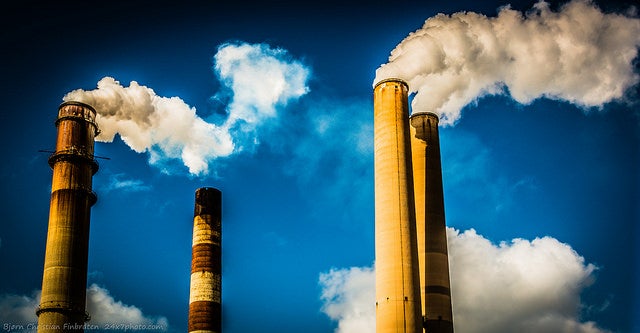Climate scare tactics won’t work in California
Some polluters and their allies are rolling out an old and tired playbook in Sacramento. California is ahead of schedule in curbing climate pollution and the economy is booming. Yet alarmism persists. These latest scare tactics are focused on one particular provision of the state’s cap-and-trade program: the level of the “price ceiling”. The price ceiling is an emergency provision that is intended to ensure that prices polluters have to pay per ton of pollution don’t reach above unexpectedly high levels.
The California Air Resources Board (CARB) is currently working to update the cap-and-trade program based on direction the Legislature gave in 2017 to extend it out to 2030. CARB will consider proposed amendments to the program today with passage of the amendments expected after a second consideration in January.
The future of climate action in California is optimism and transformation, not fear and anger
Those who look only at doomsday scenarios are mixing farfetched fearmongering with a dose of outrage by boiling this complex policy decision down to an oversimplified estimate of how much Californians might have to pay in the worst possible scenario in 2030. But fear and anger aren’t what California is about (whatever your political leanings). California is transforming its economy to a cleaner and more prosperous version of itself. After the great recession the economy recovered and grew, but carbon pollution did not.
By 2030, Californians shouldn’t be held hostage by the wildly fluctuating cost of a gallon of gas like they used to be. A more diverse portfolio of transportation fuels and modal options could actually lower overall transportation costs. The state has set the goals and the broad policy path to make this future a reality. But the details matter too. In-case-of-emergency features like the price ceiling need to remain strong so that the cap-and-trade market has room to drive the transformational change California and the rest of the world desperately need.
Price ceiling background: a history of innovation
The price ceiling is actually a pretty innovative tool. California has always had safeguards in place to ensure reductions remain cost-effective, including a first-of-its-kind reserve of allowances that are only available if prices rise unexpectedly high, creating a “soft” limit on prices. California has never needed these allowances, not even close. But when it came time to negotiate the cap-and-trade extension, that wasn’t good enough for some industry advocates. They insisted on an absolute limit on prices.
That was a problem for environmentalists like EDF because it could mean theoretical unlimited pollution at a set price. But CARB and environmental advocates were able to work together to include a price ceiling feature that would protect the atmosphere from runaway pollution if prices rise too high. CARB is required to use all revenue from sales at the price ceiling to purchase reductions on at least a ton-for-ton basis. Of course, the most straightforward solution is not to include a hard price ceiling at all; but this proved an elegant compromise.
That still leaves us with the question of how to determine how high is too high and when this emergency price ceiling should kick in. The Legislature wisely decided this question required further technical consideration and delegated the decision to CARB. CARB has carefully considered the legislative direction and proposed a price ceiling that is roughly equivalent to what was previously the highest set of prices in the allowance reserve. Polluters want regulators to lower that level dramatically. But doing so would risk removing the flexibility the market has to incentivize the transformational change the state needs to achieve its climate goals.
Don’t let polluters weaken climate regulation
This charade has been tried in California for almost a decade. But it didn’t work when out-of-state oil companies tried to stall AB 32, the state’s landmark climate policy, in 2010. It didn’t work when companies screamed about having transportation fuels regulated by cap-and-trade program in 2015. And it definitely won’t work now.













